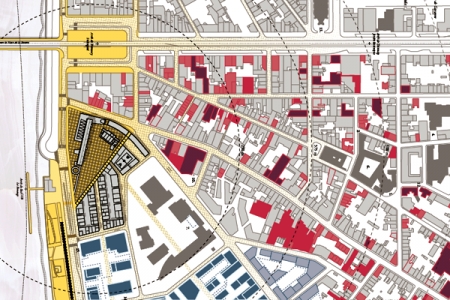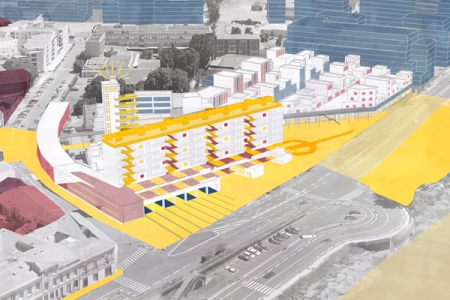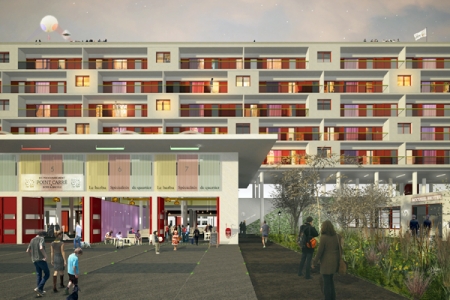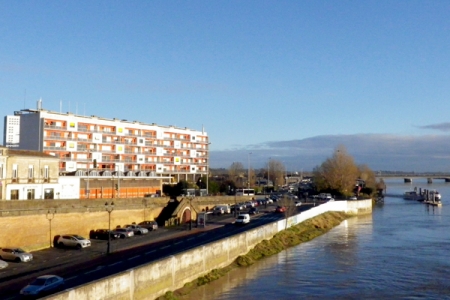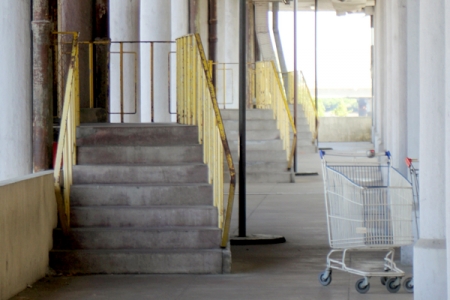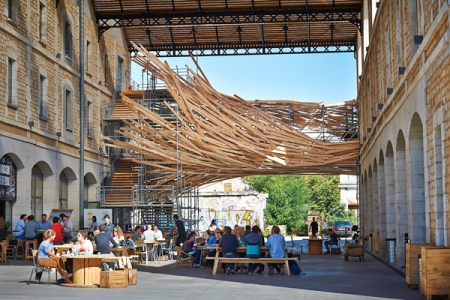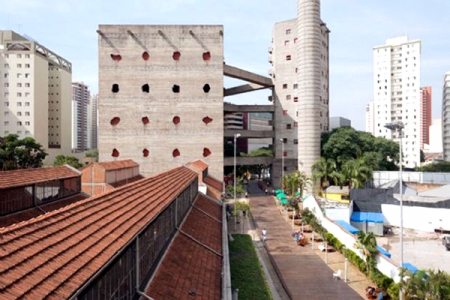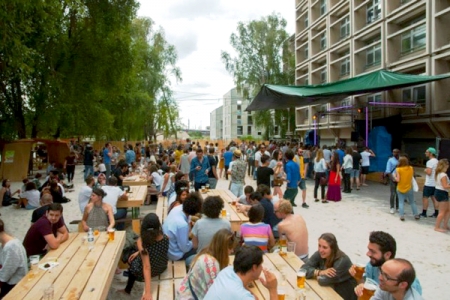L'Agora moderne, incubatrice d'initiatives locales
Bordeaux (FR) – Runner-up
TEAM DATA
Team Representative: Jules Eymard (FR) – architect; Associates: Paul Jaquet (FR), Maxime Rousseau (FR) – architects
34 rue Manon Cormier, 33000 Bordeaux – France
agoramoderne@gmail.com
See the complete listing of portraits here
See the site page here

J. Eymard, P. Jaquet & M. Rousseau
INTERVIEW
Click on the images to enlarge
1. How did you form the team for the competition?
Our team was specifically formed for this project but we started working together during our early years of studies. We are all working in different agencies, either specialized in urban planning, architecture, but also design or landscaping. Our collaborations tend to be moments of discussions about our commons interests in “manufacturing” the territory. One part of the team being from Bordeaux, the Benauge fire station represented a challenge to take, as it brings up many concerns about the future.
2. How do you define the main issue of your project, and how did you answer on this session main topic: Adaptability through Self-Organization, Sharing and/or Project (Process)?
The departure of the fire brigades from the station will leave a remarkable modern legacy in an area that is profoundly changing. The main concerns are the building’s integration to the city’s contemporary strategies and to the evolving district around. We think that the evolution of the fire station will be successful if it is compatible with the global evolution of the right bank. Therefore, we imagined hybrid programs working through “reaction systems” and with the neighbourhood’s needs. It goes beyond rehabilitation – it is a social project and an occasion to think the city differently.
3. How did this issue and the questions raised by the site mutation meet?
Opening the fire station to the city will allow people discover a modern legacy of their city. The challenge lying in changing the building is to conserve the modernist principles it represents while its very conception is based on functions that are bound to disappear… It is therefore essential to preserve the essence the building and reveal its original principles. In this way, the project does not imply rehabilitation but “habilitation“ allowing public accessibility as well as heritage conservation.
4. Have you treated this issue previously? What were the reference projects that inspired yours?
When picturing the future of the Benauge station, there is obviously a link to make with the Darwin Éco-Système project (developed close by on the same bank). This industrial heritage –transformed into an actual point of interest– launched the Niel district’s transformation. This place became an effective suburban model in the way that it fits the site. Darwin – or how a private investor can create a townscape by rehabilitating a piece of heritage. We also have it anchored in our minds because two members of the team work there or on its future development on a daily basis. The idea is certainly not to imitate this model but rather to make both complementary in order to create a new agora for Bordeaux.
Furthermore, certain members of the team have worked on similar subjects: in Saint Malo, transforming the Caserne de Lorette police station into a mixed neighbourhood, or in Marseille with the Caserne du Muy military barracks opening to the city. These projects with different contexts, histories and operational systems all tend to create links between an area that used to be closed and the surrounding districts.
5. Today –at the era of economic crisis and sustainability– the urban-architectural project should reconsider its production method in time; how did you integrate this issue in your project?
The project is part of the 2030 Métropole Millionaire dynamic. This ambition implies the creation of 75,000 new jobs and the densification of districts like the Benauge. This is why one of the goals of the modern agora is to associate needs in training and employment to the neighbourhood’s densification and transformation. The project offers the inhabitants a.o. training in renovation works so that they can find a job and participate to the development of the Benauge.
Different systems like this one are set to create synergy between private investment and the district needs. This is what we call “territorialized multiplier effects”, a process through which the impact of any invested euro is amplified for the common good. It goes through strategic investments researches that could possibly have other benefits. This effect should be set up during different times of the project, from its conception to its realization.
6. Is it the first time you have been awarded a prize at Europan? How could this help you in your professional career?
One of the team members won Europan 12 on the Saint-Herblain site. The ongoing study tackles a completely different context: a 1960’s district, with garden city qualities and searching for a fresh impulse. This first experience shows that Europan is a good way to access urban tenders in a difficult context, and also to think a project differently by searching and innovating certain practices.
